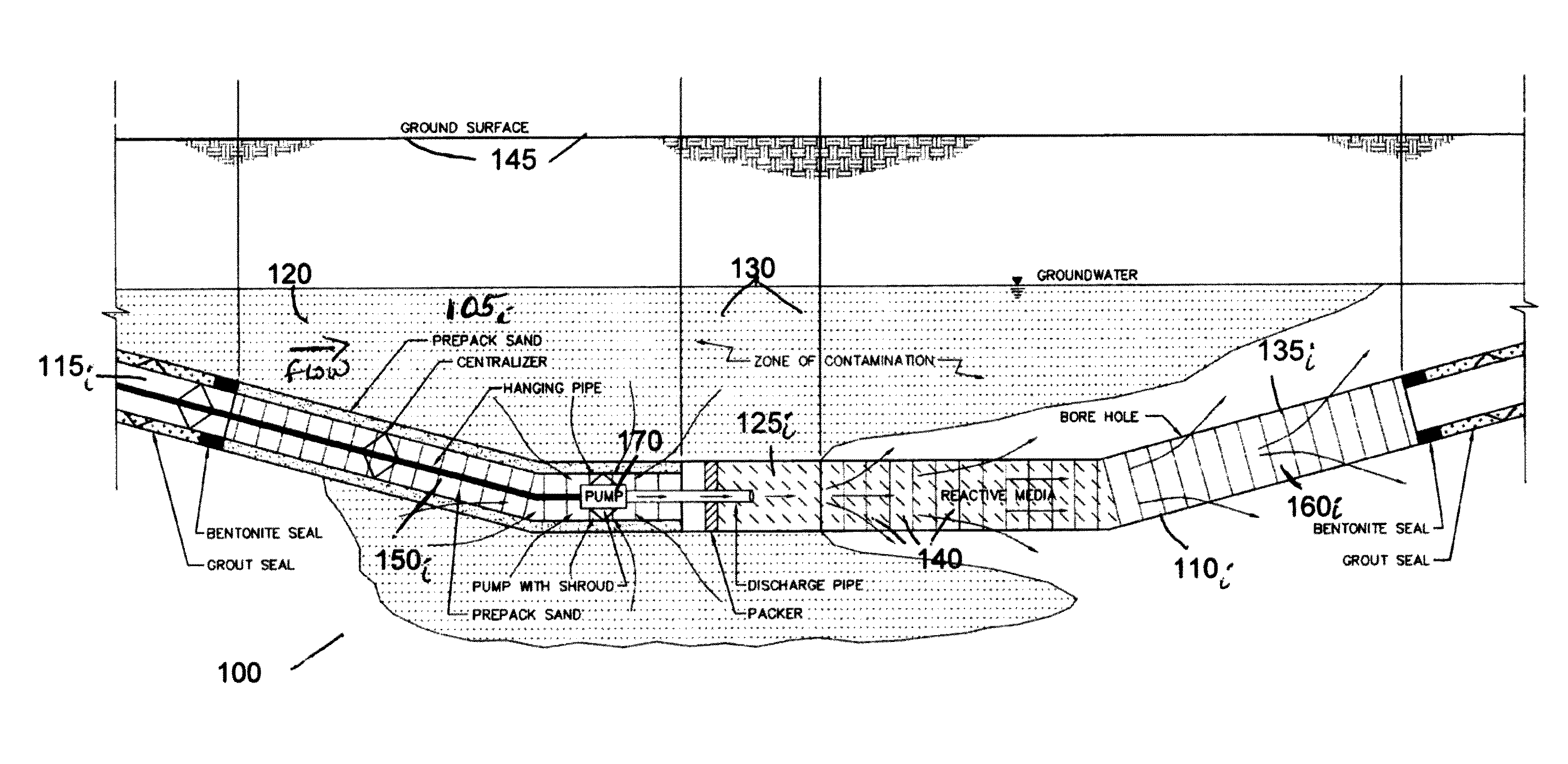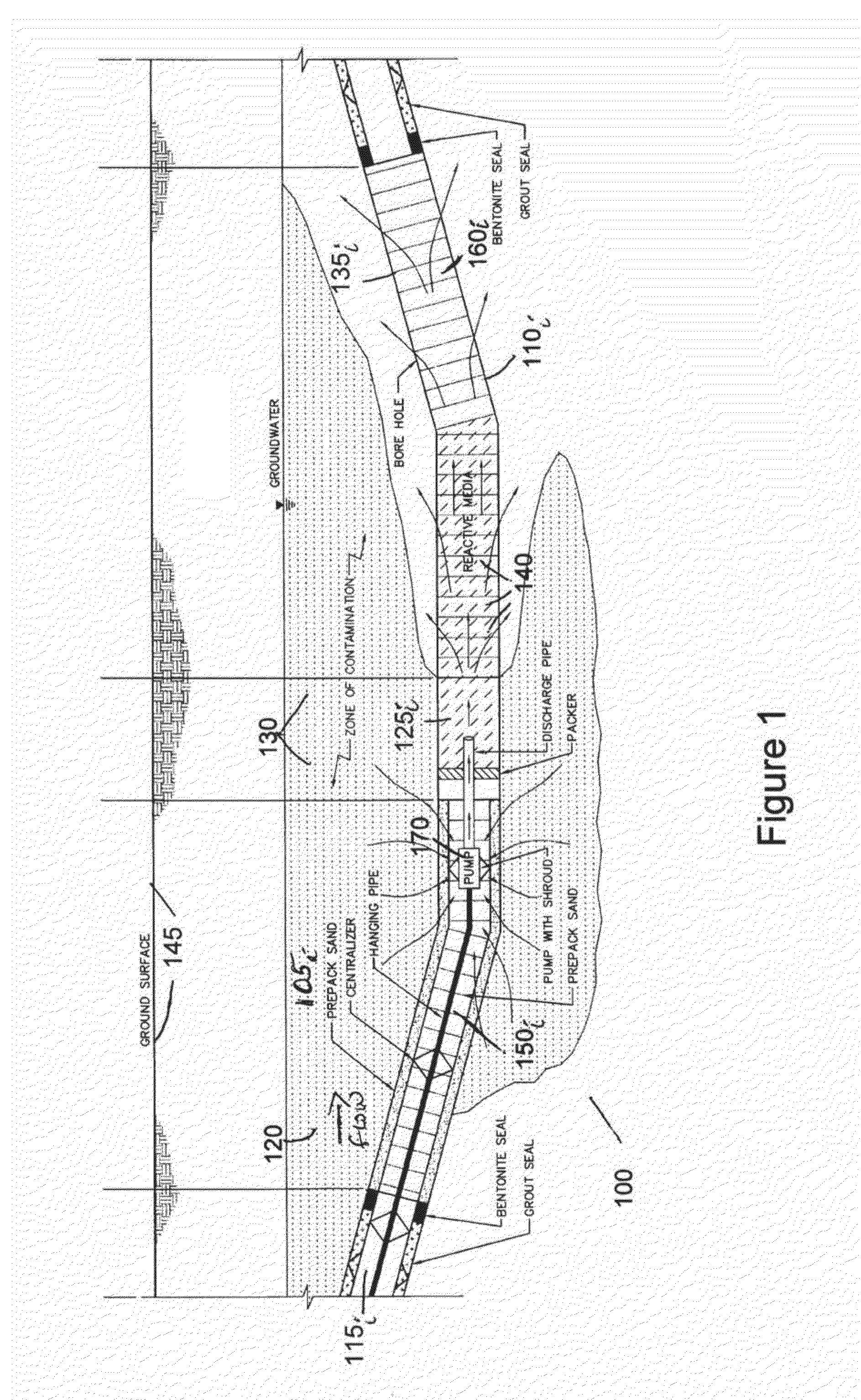Horizontal in-well treatment system and source area bypass system and method for groundwater remediation
a treatment system and bypass technology, applied in the field of horizontal inwell treatment system and source area bypass system and groundwater remediation method, can solve the problems of inability to achieve ideal candidate sites with low natural bulk hydraulic conductivity values (typically less than approximately 5 ft/day), inconvenient maintenance, and inability to meet the requirements of recurring and cumulative energy requirements and carbon footprint, and achieves the effect of reducing recurring material use and waste generation, enhancing performance, and reducing the cost o
- Summary
- Abstract
- Description
- Claims
- Application Information
AI Technical Summary
Benefits of technology
Problems solved by technology
Method used
Image
Examples
Embodiment Construction
[0034]The invention relates to a horizontal treatment (HRX) well system (also known as a horizontal in-well treatment (HIT) remediation system) comprising horizontal wells that are installed within plumes of contaminated groundwater and oriented in the general direction of groundwater flow. Each well is filled with reactive treatment media (comprising, e.g., iron, granular activated carbon, zeolite). A flow-focusing phenomenon is created by the high in-well hydraulic conductivity of the well and engineered reactive media relative to the surrounding aquifer hydraulic conductivity that passively draws impacted groundwater into the horizontal wells through a screen disposed substantially at the up-gradient portion of each well such that impacted groundwater is treated as it flows through the horizontal well. Treated groundwater then exits each horizontal well through a screen disposed substantially along the down-gradient section of the well.
[0035]According to one embodiment, the inven...
PUM
 Login to view more
Login to view more Abstract
Description
Claims
Application Information
 Login to view more
Login to view more - R&D Engineer
- R&D Manager
- IP Professional
- Industry Leading Data Capabilities
- Powerful AI technology
- Patent DNA Extraction
Browse by: Latest US Patents, China's latest patents, Technical Efficacy Thesaurus, Application Domain, Technology Topic.
© 2024 PatSnap. All rights reserved.Legal|Privacy policy|Modern Slavery Act Transparency Statement|Sitemap



